- Home
- P. D. James
Talking about Detective Fiction
Talking about Detective Fiction Read online
ALSO BY P. D. JAMES
Fiction
Cover Her Face
A Mind to Murder
Unnatural Causes
Shroud for a Nightingale
An Unsuitable Job for a Woman
The Black Tower
Death of an Expert Witness
Innocent Blood
The Skull Beneath the Skin
A Taste for Death
Devices and Desires
The Children of Men
Original Sin
A Certain Justice
Death in Holy Orders
The Murder Room
The Lighthouse
The Private Patient
Nonfiction
The Maul and the Pear Tree:
The Ratcliffe Highway Murders, 1811
(with T. A. Critchley)
Time to Be in Earnest: A Fragment of Autobiography
Contents
Foreword
1. What Are We Talking About and How Did It All Begin?
2. The Tenant of 221B Baker Street and the Parish Priest from Cobhole in Essex
3. The Golden Age
4. Soft-centred and Hard-boiled
5. Four Formidable Women
6. Telling the Story: Setting, Viewpoint, People
7. Critics and Aficionados: Why Some Don't Enjoy Them and Why Others Do
8. Today and a Glimpse of Tomorrow
Bibliography and Suggested Reading
It's a blood curdling novel about the brutal murder of a publisher who rejected a book about the brutal murder of a publisher ...
Foreword
THIS BOOK had its beginnings in December 2006, when, at the request of the Bodleian's Publishing Department, the then Librarian invited me to write a book on British detective fiction in aid of the Library. As a native of Oxford I had known from early childhood that the Bodleian Library is one of the oldest and most distinguished in the world, and I replied that I was very happy to accept the invitation but must first finish the novel on which I was then working. The book which I was privileged to write now makes its somewhat belated appearance. I was relieved that the subject proposed was one of the few on which I felt competent to pontificate, but I hope that the many references to my own methods of working won't be seen as hubris; they are an attempt to answer some of the questions most frequently asked by my readers and are unlikely to be new to audiences who have heard me speaking about my work over the years--nor, of course, to my fellow crime-writers.
Because of its resilience and popularity, detective fiction has attracted what some may feel is more than its fair share of critical attention, and I have no wish to add to, and less to emulate, the many distinguished studies of the last two centuries. Inevitably there will be some notable omissions, for which I apologise, but my hope is that this short personal account will interest and entertain not only my readers, but the many who share our pleasure in a form of popular literature which for over fifty years has fascinated and engaged me as a writer.
P. D. James
THE BRITISH CHARACTER.
Love of detective fiction.
1
What Are We Talking About
and How Did It All Begin?
Death in particular seems to provide the minds of the Anglo-Saxon race with a greater fund of innocent amusement than any other single subject.
Dorothy L. Sayers
THESE WORDS were written by Dorothy L. Sayers in her preface to a volume entitled Great Short Stories of Detection, Mystery and Horror, Third Series, published by Gollancz in 1934. She was, of course, talking not of the devastating amalgamation of hatred, violence, tragedy and grief which is real-life murder, but of the ingenious and increasingly popular stories of mystery and detection of which, by that time, she herself was an established and highly regarded writer. And to judge by the worldwide success of Arthur Conan Doyle's Sherlock Holmes and Agatha Christie's Poirot, it is not only the Anglo-Saxons who have an appetite for mystery and mayhem. It seems that this vicarious enjoyment in "murder considered as a fine art," to quote Thomas De Quincey, makes the whole world kin. In his book Aspects of the Novel, E. M. Forster writes:
"The king died and then the queen died" is a story. "The king died, and then the queen died of grief" is a plot.... "The queen died, no one knew why, until it was discovered that it was through grief at the death of the king." This is a plot with a mystery in it, a form capable of high development.
To that I would add, "Everyone thought that the queen had died of grief until they discovered the puncture mark in her throat." That is a murder mystery, and it too is capable of high development.
Novels which enshrine a mystery, often involving a crime, and which provide the satisfaction of an ultimate solution are, of course, common in the canon of English literature, and most would never be thought of in terms of detective fiction. Anthony Trollope, who, like his friend Dickens, was fascinated by the criminal underworld and the exploits of the newly formed detective force, frequently teases us in his novels with a central mystery. Did Lady Eustace steal the family diamonds, and if not, who did? Did Lady Mason forge the codicil to her husband's will in Orley Farm, a codicil from which she and her son had benefited for thirty years? Perhaps Trollope gets closest to the conventions of the orthodox detective story in Phineas Redux, in which the hero is arrested for the murder of his political enemy, Mr. Bonteen, and only escapes conviction on strong circumstantial evidence by the energetic efforts of Madame Max, the woman who loves him and obtains the vital clue which helps to convict the true murderer. Who is the mysterious woman in white in Wilkie Collins's novel of that name? In Charlotte Bronte's Jane Eyre, who is it that Jane hears shrieking in the night, who attacks the mysterious visitor to Thornfield Hall, and what part does the servant Grace Poole play in these dark matters? Charles Dickens provides both mystery and murder in Bleak House, creating in Inspector Bucket one of literature's most memorable detectives, while his unfinished novel The Mystery of Edwin Drood contains enough of the plot to encourage fascinating conjecture about how it was to be resolved.
A modern example of a novel which enshrines a mystery and its solution is John le Carre's Tinker, Tailor, Soldier, Spy. This is generally regarded as one of the most distinguished modern novels of espionage, but it is also a perfectly constructed detective story. Here the central mystery is not an act of murder but the identity of the mole at the heart of the British Secret Service. We know the names of the five suspects, and the setting gives us access to a secret esoteric and cloistered world, making us privileged participants in its mysteries. The detective called in to identify the traitor is John le Carre's sympathetic serial hero George Smiley, with the help of his junior colleague Peter Guillam, and the solution at the end of the novel is one which we the readers should be able to arrive at from evidence fairly presented.
But perhaps the most interesting example of a mainstream novel which is also a detective story is the brilliantly structured Emma by Jane Austen. Here the secret which is the mainspring of the action is the unrecognised relationships between the limited number of characters. The story is confined to a closed society in a rural setting, which was to become common in detective fiction, and Jane Austen deceives us with cleverly constructed clues (eight immediately come to mind)--some based on action, some on apparently innocuous conversations, some in her authorial voice. At the end, when all becomes plain and the characters are at last united with their right partners, we wonder how we could have been so deceived.
So what exactly are we talking about when we use the words "detective story," how does it differ from both the mainstream novel and crime fiction, and how did it all begin? Novels which have an atrocious crime at their heart, whose writ
ers set out to explore and interpret the dangerous and violent underworld of crime, its causes, ramifications and effect on both perpetrators and victims, can cover an extraordinarily broad spectrum of imaginative writing extending to some of the highest works of the human imagination. These books may indeed have murder at their heart, but there is frequently no mystery about the perpetrator and therefore no detective and no clues. An example is Graham Greene's Brighton Rock. We know from the beginning that Pinkie is a killer and that the unfortunate Hale, desperately walking the streets and lanes of Brighton, knows, as do we, that he is going to be murdered. Our interest is not primarily in the investigation of murder, but in the tragic fate of those involved. The novel adumbrates Greene's preoccupation with the moral ambiguity of evil, which is at the heart of his creativity; indeed, he came to regret the detective element in Brighton Rock and his own division of his novels between "entertainments" and those presumably which he intended should be taken seriously. I'm glad that Greene later repudiated this puzzling dichotomy, which picked out certain of his novels for disparagement and which helped to promote the still prevalent habit of dividing novels into those which are popular, exciting and accessible but, perhaps for these reasons, tend to be undervalued, and those in a somewhat ill-defined category which are granted the distinction of being described as literary novels. Greene surely couldn't have meant that, when writing an "entertainment," he took less trouble with the literary style, cared less for the truth of characterisation and modified the plot and theme to accommodate what he saw as the popular taste. This is manifestly not true of a writer of whom the words of Robert Browning are particularly appropriate:
Our interest's on the dangerous edge of things.
The honest thief, the tender murderer,
The superstitious atheist.
Although the detective story at its highest can also operate on the dangerous edge of things, it is differentiated both from mainstream fiction and from the generality of crime novels by a highly organised structure and recognised conventions. What we can expect is a central mysterious crime, usually murder; a closed circle of suspects, each with motive, means and opportunity for the crime; a detective, either amateur or professional, who comes in like an avenging deity to solve it; and, by the end of the book, a solution which the reader should be able to arrive at by logical deduction from clues inserted in the novel with deceptive cunning but essential fairness. This is the definition I have usually given when speaking about my work but, although not inaccurate, it now seems unduly restrictive and more appropriate to the so-called Golden Age between the wars than it is today. Not all the villains are among a small group of obvious suspects; the detective may be faced with a single named or secret adversary who must be finally run down and defeated by logical deduction from observed facts and, of course, by the accepted heroic virtues: intelligence, courage and energy. This type of mystery is frequently a highly personal conflict between the hero and his prey, characterised by physicality, ruthlessness and violence, often amounting to torture, and even if the detective element is strong, the book is more appropriately described as a thriller than a detective story. The James Bond novels of Ian Fleming are the obvious example. But for a book to be described as detective fiction there must be a central mystery, and one that by the end of the book is solved satisfactorily and logically, not by good luck or intuition, but by intelligent deduction from clues honestly if deceptively presented.
One of the criticisms of the detective story is that this imposed pattern is mere formula writing, that it binds the novelist in a straitjacket which is inimical to the artistic freedom which is essential to creativity, and that subtlety of characterisation, a setting which comes alive for the reader and even credibility are sacrificed to the dominance of structure and plot. But what I find fascinating is the extraordinary variety of books and writers which this so-called formula has been able to accommodate, and how many authors have found the constraints and conventions of the detective story liberating rather than inhibiting of their creative imagination. To say that one cannot produce a good novel within the discipline of a formal structure is as foolish as to say that no sonnet can be great poetry since a sonnet is restricted to fourteen lines--an octave and a sestet--and a strict rhyming sequence. And detective stories are not the only novels which conform to a recognised convention and structure. All Jane Austen's novels have a common storyline: an attractive and virtuous young woman surmounts difficulties to achieve marriage to the man of her choice. This is the age-long convention of the romantic novel, but with Jane Austen what we have is Mills & Boon written by a genius.
And why murder? The central mystery of a detective story need not indeed involve a violent death, but murder remains the unique crime and it carries an atavistic weight of repugnance, fascination and fear. Readers are likely to remain more interested in which of Aunt Ellie's heirs laced her nightly cocoa with arsenic than in who stole her diamond necklace while she was safely holidaying in Bournemouth. Dorothy L. Sayers's Gaudy Night doesn't contain a murder, although there is an attempt at one, and the death at the heart of Frances Fyfield's Blood from Stone is a spectacular and mysterious suicide. But, except in those novels of espionage which are primarily concerned with treachery, it remains rare for the central crime in an orthodox mystery to be other than the ultimate crime for which no human reparation can ever be made.
So how and when did detective fiction become an accepted genre of popular fiction? To this there is no easy or generally accepted answer. The novel itself is a comparatively recent product of the human imagination, hence its name. It cannot, for example, match the ancient lineage of drama and, unlike drama and verbal storytelling, it can appeal to only a privileged minority until a community achieves a high level of literacy. Storytelling is, of course, an ancient art. Tales which combine excitement with mystery, which offer a puzzle and a solution, can be found in ancient literature and legend and were probably told even earlier by the tribal storyteller round the camp fires of our remote ancestors. Their tales were surely more likely to have dealt with heroic action, revenge and mystery than with subtle ambiguities of character and the domestic problems of the warring couple in the next cave. And novels were being written and read for decades before readers, publishers, critics and booksellers thought of defining them in such categories as Mystery, Thriller, Romantic Fiction, Fantasy or Science Fiction, divisions which are often more a matter of convenience, marketing strategy, taste or prejudice than of fact, and which can be unhelpful to both the novels and their writers.
Some historians of the genre claim that the detective story proper, which fundamentally is concerned with the bringing of order out of disorder and the restoration of peace after the destructive eruption of murder, could not exist until society had an official detective force, which in England would be in 1842, when the detective department of the Metropolitan Police came into being. A distinguished detective novelist, Reginald Hill, creator of the Yorkshire duo Andrew Dalziel and Peter Pascoe, wrote in 1978, "Let me be clear. Without a police force there can be no detective fiction although several modern writers have, with varying degrees of success, tried to write detective stories set in pre-police days." This opinion seems rational: detective fiction is unlikely to flourish in societies without an organised system of law enforcement or in which murder is commonplace. Mystery novelists, particularly in the Golden Age, were generally strong supporters of institutional law and order, and of the police. Individual officers might be portrayed as ineffective, plodding, slow-witted and ill-educated, but never as corrupt. Detective fiction is in the tradition of the English novel, which sees crime, violence and social chaos as an aberration, virtue and good order as the norm for which all reasonable people strive, and which confirms our belief, despite some evidence to the contrary, that we live in a rational, comprehensible and moral universe. And in doing this it provides not only the satisfaction of all popular literature, the mild intellectual challenge of a puzzle, excitement, confirmation
of our cherished beliefs in goodness and order, but also entry to a familiar and reassuring world in which we are both involved in violent death and yet remain personally inviolate both from responsibility and from its terrors. Whether we should expect this detachment from vicarious responsibility is, of course, another question and one which bears on the difference between the books of the years between the wars and the detective novels of today.
One strand of the tangled skein of detective fiction goes back to the eighteenth century and includes the gothic tales of horror written by Ann Radcliffe and Matthew "Monk" Lewis. Those gothic novelists were chiefly concerned to enthral readers with tales of terror and the horrific plight of the heroine, and although these books embodied puzzles and riddles, they were concerned far more with horror than with mystery. We recall the scene in Jane Austen's Northanger Abbey where the heroine, Catherine Morland, and her friend Isabella meet to discuss their current reading. Isabella says:
"I will read you their names directly; here they are, in my pocket-book. Castle of Wolfenbach, Clermont, Mysterious Warnings, Necromancer of the Black Forest, Midnight Bell, Orphan of the Rhine, and Horrid Mysteries. Those will last us some time."
"Yes, pretty well; but are they all horrid, are you sure they are all horrid?"
They were indeed, but since the detective story deals with rational terror, their influence on the later development of the genre has been limited, although there are echoes of half-supernatural terror in some of Conan Doyle's stories. Some critics might argue that horror plays a far greater part than ratiocination in the modern psychological mysteries which deal primarily with atrocious serial murders by psychopaths. The most effective are those by writers with personal involvement in the investigation of serial murder, the Americans Patricia Cornwell and Kathy Reichs and, in this country, Val McDermid, whose central character, Tony Hill, is a psychological profiler, and whose novels show evidence of the careful research necessary both for mood and for credibility. These novels, which are becoming increasingly popular, could be said to constitute a separate genre in crime fiction as they do in films.

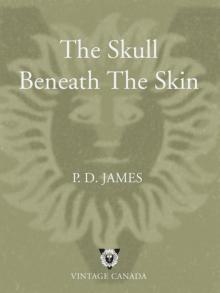 The Skull Beneath the Skin
The Skull Beneath the Skin A Taste for Death
A Taste for Death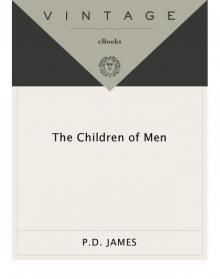 The Children of Men
The Children of Men The Part-Time Job
The Part-Time Job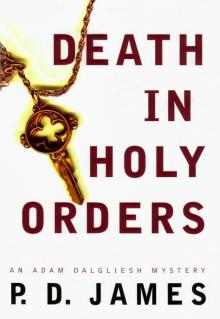 Death in Holy Orders
Death in Holy Orders The Victim
The Victim Shroud for a Nightingale
Shroud for a Nightingale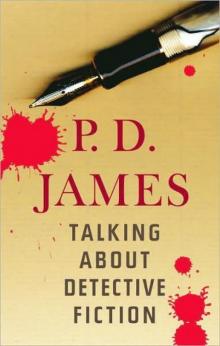 Talking about Detective Fiction
Talking about Detective Fiction Sleep No More
Sleep No More The Mistletoe Murder and Other Stories
The Mistletoe Murder and Other Stories Time to Be in Earnest
Time to Be in Earnest Original Sin
Original Sin A Mind to Murder
A Mind to Murder Cover Her Face
Cover Her Face Innocent Blood
Innocent Blood Devices and Desires
Devices and Desires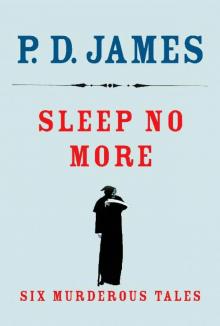 Sleep No More: Six Murderous Tales
Sleep No More: Six Murderous Tales Death Comes to Pemberley
Death Comes to Pemberley The Mistletoe Murder
The Mistletoe Murder Death of an Expert Witness
Death of an Expert Witness The Private Patient
The Private Patient The Black Tower
The Black Tower Devices & Desires - Dalgleish 08
Devices & Desires - Dalgleish 08 Unnatural Causes
Unnatural Causes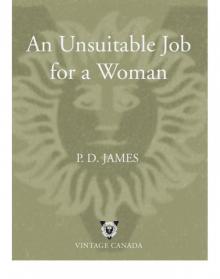 An Unsuitable Job for a Woman
An Unsuitable Job for a Woman The Murder Room
The Murder Room A Certain Justice
A Certain Justice The Lighthouse
The Lighthouse The Maul and the Pear Tree
The Maul and the Pear Tree